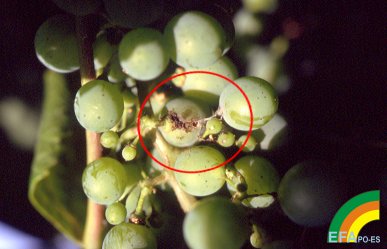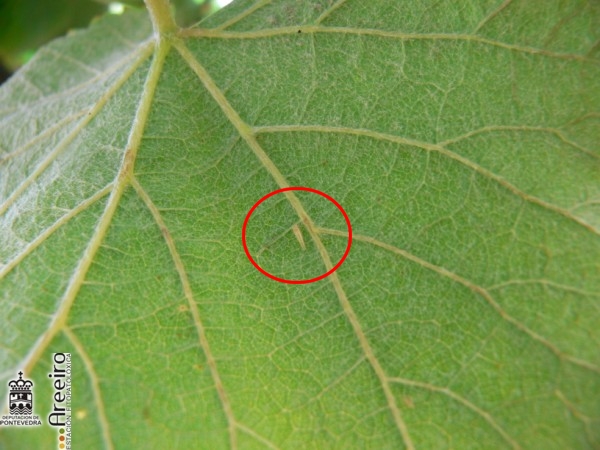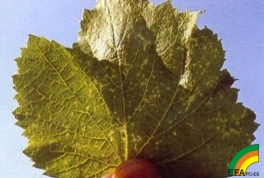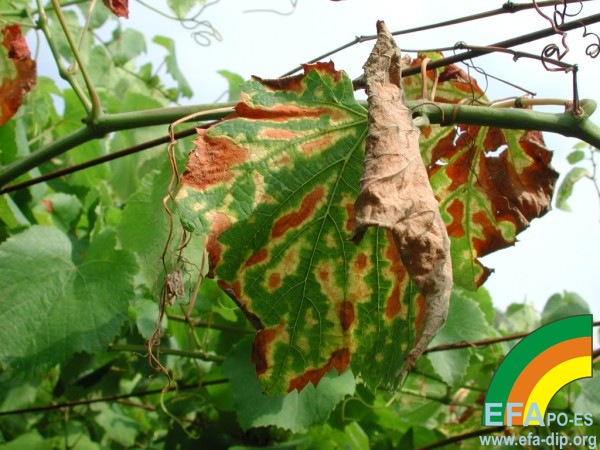|
|
Grapevine and Apple tree |
| |
|
|
|
Grapevine and Apple tree |
| |
|
|
|
Grapevine, Apple tree and Pine |
| |
|
|
|
Grapevine, Apple tree, Oak and
Pine |
| |
|
|
|
Grapevine, Apple tree and Oak |
| |
|
|
|
Grapevine |
| |
|
|
|
Grapevine, Apple tree and Several
crops |
| |
|
|
|
Grapevine, Apple tree, Stone fruits and
Maize |
| |
|
|
|
Grapevine, Apple tree and
Maize |
| |
|
|
|
Grapevine, Apple tree and Chesnut
tree |
| |
|
|
|
Grapevine, Apple tree and Chesnut
tree |
| |
|
|
|
Several Crops, Grapevine and Walnut
tree |
| |
|
|
|
Grapevine and Apple tree |
| |
|
|
|
Grapevine, Apple tree, Several crops and Forestry
species |
| |
|
|
|
Grapevine and Apple tree |
| |
|
|
|
Grapevine, Apple tree y
Cítrics |
| |
|
|
|
Grapevine, Apple tree, Quince tree and
Camellia |
| |
|
|
|
Grapevine, Kiwi plant and
Camellia |
| |
|
|
|
Grapevine and Apple tree |
| |
|
|
|
Grapevine |
| |
|
|
|
Grapevine, Apple tree, Peach tree and
Evonymus |
| |
|
|
|
Grapevine, Various Crops, Kiwi plant, Oak and
Camellia |
| |
|
|
|
Grapevine and Apple tree |
| |
|
|
|
Grapevine, Apple tree and Oak |
| |
|
|
|
Grapevine |
| |
|
|
|
Grapevine |
| |
|
|
|
Pine, Apple tree, Stone Fruit Trees and
Ornamentals |
| |
|
|
|
Fruit Trees, Grapevine and Devices to apply
Phytosanitary Products |
| |
|
|
|
PHYTOSANITARY WARNING
09/07/2009
| GRAPEVINE Phenological stage: berries
pea-sized- beginning of bunch closure |
Mildew: |
The situation of
grapevines has slightly improved as compared to previous weeks, and no new
symptoms appeared in untreated control plants. However, it must be remarked
that after last infections, many grapevines showed affected berries. If North
winds persist, grapevine conditions will be improved, but it is necessary to
keep the maximum level of surveillance because any change in the
weather conditions will lead to the emergence of new symptoms.
|
Oidium: |
No symptoms have been
observed along this week. However, grapevine is initiating the stage "bunch
closure", highly sensitive to the disease, thus monitoring should be
increased.
|
Black-Rot:
 |
The situation in our
monitoring plot has improved, being highly favoured by the change in the
environmental conditions. Control plants did not show new signs of the disease.
Sheet

|
Moths: |
 Moth
captures in the traps have been low. However, first signs of larval activity
are observed. Monitoring should be increased, but so far it is not
necessary to treat. Moth
captures in the traps have been low. However, first signs of larval activity
are observed. Monitoring should be increased, but so far it is not
necessary to treat.
|
Green mosquito and
other cicadellidae: |
 The
number of captures in the traps has increased, mainly of Zygina rhamni, species
with nymphs on the leaves. The evolution of populations should be
monitored. The
number of captures in the traps has increased, mainly of Zygina rhamni, species
with nymphs on the leaves. The evolution of populations should be
monitored.
|
Mites: |
 Signs of
mite feeding activity have been observed again in untreated control plants.
Temperatures are expected to rise, which will make it necessary to
increase monitoring since these animals develop better in warm
and dry conditions. Signs of
mite feeding activity have been observed again in untreated control plants.
Temperatures are expected to rise, which will make it necessary to
increase monitoring since these animals develop better in warm
and dry conditions.
|
Wood diseases: |
 During these
days, we are beginning to observe plants with symptoms of any wood disease. We
must remark that these plants should be marked to differentiate them from the
other plants so as to take the appropriate
measures. During these
days, we are beginning to observe plants with symptoms of any wood disease. We
must remark that these plants should be marked to differentiate them from the
other plants so as to take the appropriate
measures.
|
| APPLE
TREE |
Scab: |
In
general, we have not observed any symptoms of the disease during this week, not
even in most sensitive varieties.
|
Cydia
pomonella: |
We
haven't recorded any adult captures in any of the traps placed in our
monitoring plots. However, environmental conditions expected for the following
days favour pest development, thus we must check plants for the manifestation
of signs of larval penetrations into the fruit, or treat in case a specific
monitoring is not being performed.
|
Red
spider: |
We must
remark that in case a previous treatment had been performed to reduce mite
populations, its efficacy must be confirmed, since we have received previously
treated plant samples with mite populations. In addition, expected weather
conditions favour the dissemination of the pest.
|
| SEVERAL CROPS |
| Aphids: |
 Colonies
of different aphid species are being observed again in both fruit and
horticultural crops. High temperatures favour the establishment and development
of the insect. Thus in case they are observed, plants must be treated as soon
as possible. Colonies
of different aphid species are being observed again in both fruit and
horticultural crops. High temperatures favour the establishment and development
of the insect. Thus in case they are observed, plants must be treated as soon
as possible.
|
|

